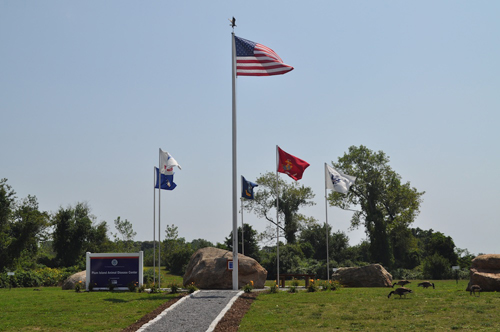Plum Island going back under the microscope

Environmental experts on both sides of Long Island Sound are embarking on new initiatives designed to educate the public about the importance of preserving Plum Island. In New York, the state Department of Environment Conservation is funding a year-long study of the island. Starting in January 2015, biologists from the DEC’s New York Natural Heritage Program will document at-risk animal and plant species in the island’s interior and along its shoreline.
At the same time, in Connecticut, an environmental nonprofit group called Save the Sound has created a full-time temporary position to spread the word about conserving Plum Island’s open space.
The DEC funding is being used to conduct the most comprehensive inventory of animal and plant life on Plum Island to date, said Matthew Schlesinger, the program’s chief zoologist.
“The Audubon chapters of Long Island have been doing surveys of the bird life [on Plum Island] for years and there was a seven-year effort to try to identify the plants on the island,” Mr. Schlesinger said. “So there are a few groups of species that people know a lot about, but there are other things that no one has studied there before. We will have a lot to look at.”
As part of the study, biologists will survey bats, small mammals, certain birds, freshwater reptiles and amphibians, sea turtles, butterflies, moths, beetles, rare plants and important types of habitats. The Natural Heritage Program is working with the DEC’s Division of Fish, Wildlife, and Marine Resources to finalize the scope of the work and to determine how much funding the program requires, according to a DEC spokesman.
The full-time Save the Sound job, which is being advertised as a “Plum Island outreach associate” position, is being funded by private donations.
The position, which would be based primarily out of Southold, calls for community organizing, social media outreach and other means of public education.
“One of the biggest things we’ve learned is there are a lot of misconceptions about what Plum Island is and isn’t,” said Leah Lopez Schmalz, Save the Sound’s director of legislative and legal affairs. “As with most things, education is key, and as we got to talking to more and more people they became excited about the concept of preserving open space.
“We thought this position was the best use of the funding because we will have someone on the ground and on Long Island who is in the community and go can town by town to talk to the public about Plum Island and the need to preserve it,” she said.
Both initiatives come almost one year after Southold Town passed its much-anticipated and first-ever zoning of the island last August. The zoning restricts any further development on the island while allowing for passive recreation, as well as a research facility, in the existing infrastructure.
Prior to the enactment of zoning, environmentalists had worked to highlight the importance of protecting the island’s unique plant and wildlife habitats before the federal government made any moves to sell the 840-acre island to the highest bidder.
Environmental groups, including Save the Sound, have questioned the thoroughness of an environmental impact study that was required as part of the government’s selling process — especially after reports that woolly mammoth bones found on Plum Island were incorrectly mentioned in one sentence of the 500-page Final Environmental Impact Statement. (Newspaper reports of the discovery pertained to Plum Island, Mass.)
Ms. Schmalz hopes the new efforts by Save the Sound and the Natural Heritage Program will continue to keep Plum Island — and its plants and wildlife — in the public eye, while supplementing the findings in the FEIS.
“It is always a little bit worrisome to hear people talk about how the sale is so far off in the future, because … it is really not,” she said. “While it is five or six years down the road, that stuff comes up really quickly. We really feel like everyone has to keep pushing the momentum to protect the wild land that we have.”








